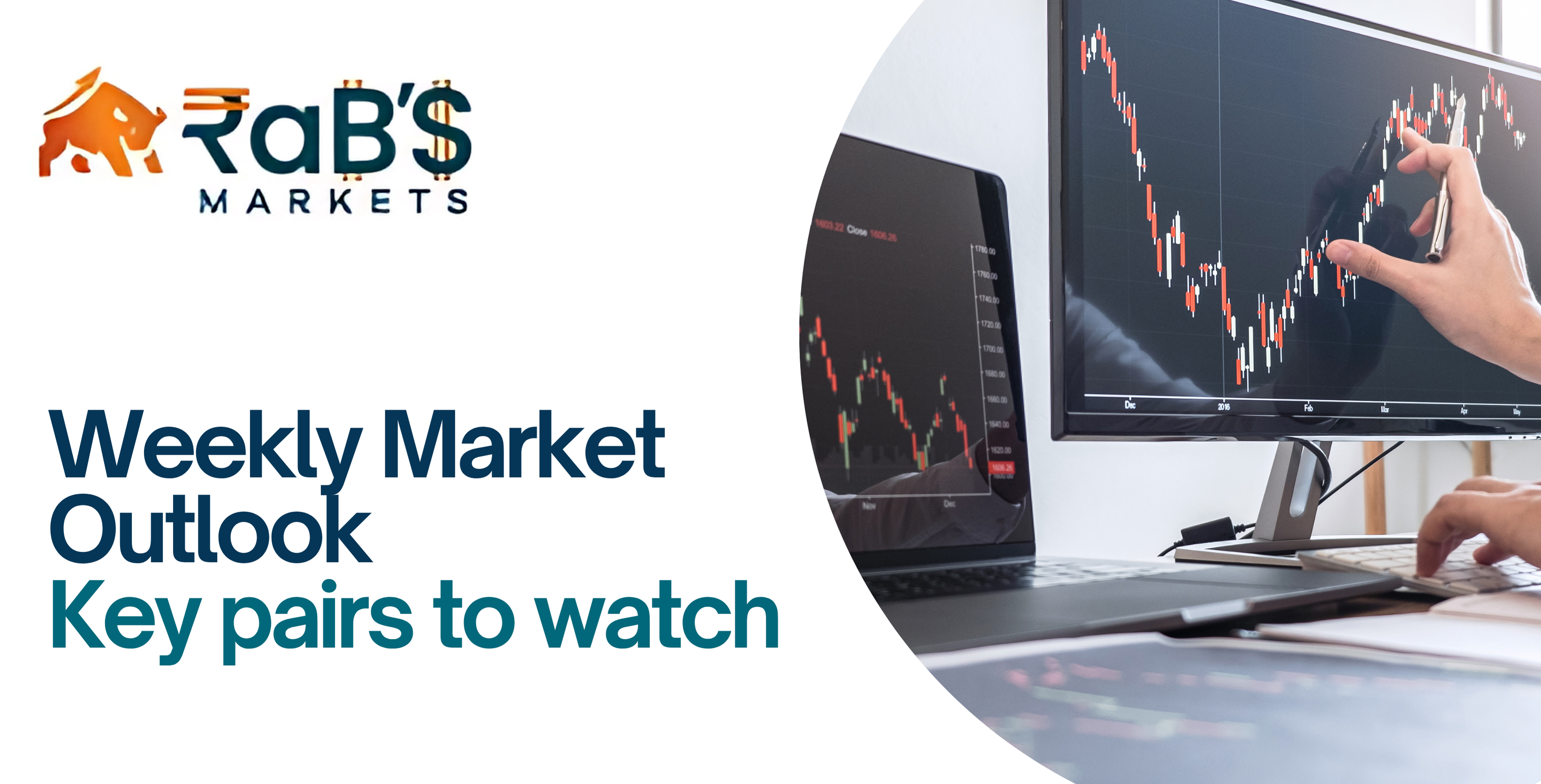The global markets are setting up for another eventful week, with major currencies, precious metals, and top cryptocurrencies all poised for potential moves. Economic data, central bank statements, and market sentiment are aligning to create opportunities — if you know where to look.
At Rabs Markets, we’ve highlighted the key pairs and instruments to keep on your radar in the days ahead.
🔑 Major Currency Pairs to Watch
EUR/USD — Euro Under Pressure
The euro remains range-bound ahead of key Eurozone inflation and growth numbers. A stronger US dollar driven by Fed policy speculation could push EUR/USD lower if data disappoints.
Key Levels to Watch:
- Support: 1.0800
- Resistance: 1.0950
GBP/USD — Pound Awaits GDP Clarity
UK GDP and employment figures will shape the pound’s next move. A stronger reading could boost GBP/USD, while any signs of stagnation may weigh on sentiment.
Key Levels to Watch:
- Support: 1.2800
- Resistance: 1.3000
USD/JPY — Focus on BOJ
The yen remains under pressure as traders watch for any surprises from the Bank of Japan and new inflation data.
Key Levels to Watch:
- Support: 155.50
- Resistance: 158.00
AUD/USD — China’s Data in the Driver’s Seat
The Aussie dollar remains sensitive to Chinese trade figures and commodity demand signals. Stronger-than-expected numbers could help lift AUD/USD higher.
Key Levels to Watch:
- Support: 0.6650
- Resistance: 0.6800
USD/CHF — Safe Haven Play
Switzerland’s economic stability keeps the franc a go-to safe haven. If global risk sentiment sours, expect USD/CHF to test its support zones.
Key Levels to Watch:
- Support: 0.8750
- Resistance: 0.8950
Metal Pairs to Watch
XAU/USD (Gold) — Safe Haven Still in Demand
Gold traders are watching inflation data and Fed commentary closely. Any dovish signals could fuel another rally in XAU/USD.
Key Levels to Watch:
- Support: $2,340
- Resistance: $2,420
XAG/USD (Silver) — Industrial & Risk Sentiment
Silver may ride the coattails of gold but also responds to industrial demand signals, making China’s output figures relevant.
Key Levels to Watch:
- Support: $29.00
- Resistance: $30.50
₿ Crypto Pairs to Watch
BTC/USD — Bitcoin’s Breakout Watch
Bitcoin continues to test key resistance as investors weigh macro conditions and regulatory headlines. Volatility remains high with traders watching for a confirmed breakout above recent highs.
Key Levels to Watch:
- Support: $60,000
- Resistance: $65,000
A sustained push above $65,000 could open the door to retest all-time highs in the weeks ahead.
ETH/USD — Ethereum Eyes Next Move
Ethereum is tracking Bitcoin’s lead but has its own catalysts — especially developments in ETH ETFs and network upgrades. Watch for signs of momentum if BTC rallies.
Key Levels to Watch:
- Support: $3,200
- Resistance: $3,500
A break and close above $3,500 could trigger a new bullish leg for ETH/USD.
Key Takeaway for the Week
With central bank meetings, economic releases, and crypto headlines driving sentiment, this week’s trading environment could deliver sharp moves — but only to those prepared.
✔️ Use technical levels and news updates together.
✔️ Apply proper risk management, especially in volatile crypto trades.
✔️ Stay informed and flexible as conditions shift.
At Rabs Markets, you can trade all these pairs — forex, metals, and crypto — in one secure, transparent platform, with tight spreads and advanced tools to make your week productive.



